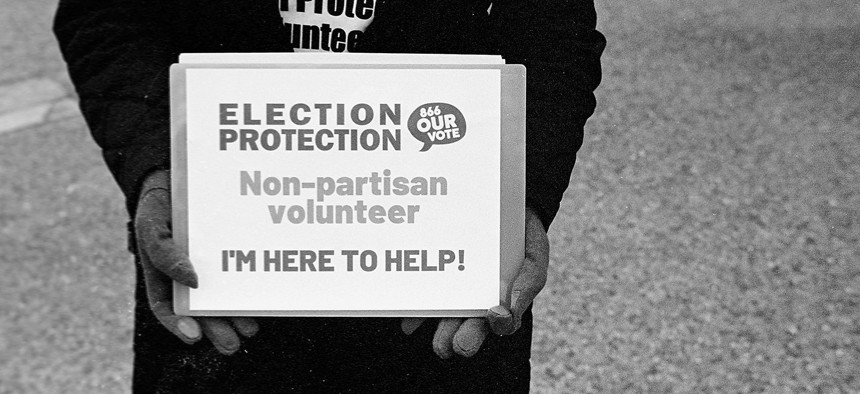Elections
Midterms, misinformation and violence
New Yorkers must decipher fact from fiction amidst the spread of online misinformation and news of election-related violence during an already contentious midterm season – and here’s how nonprofits are taking action.

Photo by Andrew Yu - Rights - ARYue - Flickr
Two years after former President Donald Trump cried wolf about presidential election fraud, New Yorkers must now weed through mountains of online midterm election misinformation and news of election-related violence amidst an already contentious midterm season. While the newly passed John R. Lewis Voting Rights Act of New York protects voters from discriminatory policies, voters are not immune to the online influence and partisan-driven violence manifesting across the United States.
New York's congressional and gubernatorial races' uncertain outcomes have indicated New York's potential for electoral battleground states, heightening partisan tensions and related violence. With New York's early voting period closing and countrywide tension over midterm elections bubbling over, New York-based nonprofits are working to address growing misinformation concerns and preempt violence.
A recent poll conducted by AP-NORC Center for Public Affairs Research found that 91% of Americans believe the spread of misinformation is a problem, with over 70% of respondents believing it incites extremist political views and hate crimes.
Identifying the problem is the first step; according to a press release from the New York University-based nonprofit, the Brennan Center for Justice, "when presented with information about existing election safeguards, voters' confidence in future elections increased across the board." Therefore, potential solutions may lie in providing accurate information to voters. In response to findings of increasing levels of online misinformation, nonprofits are working to bridge this information gap while highlighting the threat of voting rights violations to educate voters.
Measuring the threat of misinformation and election-related violence in New York is no easy task, especially as New Yorkers enter a surprisingly contentious election season. Contributing to the threat evaluation of misinformation on social media, the Brennan Center's “Midterm Monitor” allows users to track election messaging and larger narratives, navigating through multiple sources. They have also provided a voter intimidation guide, supporting voters with unanswered questions about election law.
With people patrolling the polls in Arizona suited up in armed tactical gear and similar threats occurring across the country, New York officials have doubled down on their promise to protect voters. At the beginning of the early voting period, state Attorney General Letitia James outlined voter protection laws in a guide delivered to law enforcement and polling workers to curb misinformation and voter suppression. Subsequently, Peter Kehoe, executive director of the New York State Sheriffs’ Association, told USA Today, "Hopefully, all goes smoothly in New York. And if it doesn't, we'll be ready."
To bridge the gap of these state-level promises to voters attending the polls, New York branches of the American Civil Liberties Union and Election Protection have begun aiding voters via hotline. Nonprofit organizations focusing on minority communities are providing critical information to their communities as well.
“Without watchdogs and allied groups that advocate for voting rights and monitor mis- and disinformation, Latinos will continue to believe that they are not full participants in U.S. democracy and will abstain from claiming their rightful place in our society, even as they number almost 1 in 5 people in this country,” said Lourdes M. Rosado, president and general counsel at LatinoJustice PRLDEF. “That’s an unacceptable state of affairs and one we will continue to fight to eradicate.”
